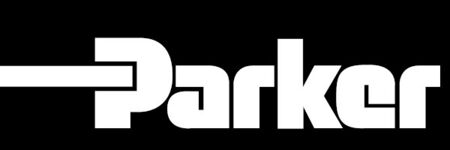Parker
- Members
Parker-Hannifin Corporation, usually referred to as just Parker, is one of the largest companies in the world in motion control technologies, including aerospace, climate control, electromechanical, filtration, fluid and gas handling, hydraulics, pneumatics, process control, and sealing and shielding. Parker employs about 58,000 people globally.

|
Efficient and Connected Off-Road Machinery | |
| This white paper explores both global and U.S. market trends that are driving new thinking, designs and technologies in Off-Road machinery. | ||
Details
Parker Hannifin acquired Commercial Intertech Corporation, a maker of hydraulic systems, in 2000. With a cost of $366 million, this was at the time Parker Hannifin's biggest acquisition.
In 2001, CEO Don Washkewicz introduced lean startup methods to company operations and has said that over the decade this reduced the time to obtain price quotes by 60% and cut product development lead times by 25%.
In 2002 the company appointed Craig Maxwell as head of engineering; Maxwell brought a focus on innovation as well as rigor; he argued for and was given a $20M annual budget to fund blue sky inventions made by engineers and has given engineers time to pursue them; at the same time his team developed software that allows tracking each of the company's 1700 ongoing R&D projects graded by risk and potential reward, and closely managing their progress. In 2011 he hired Ryan Farris out of Vanderbilt University and licensed patents covering a powered exoskeleton that Farris had worked on at Vanderbilt. In 2015 the company opened an internal business incubator that Maxwell had proposed when he was first hired.
The company won $2 billion in contracts to build fuel and hydraulic systems for Airbus A350 airliners in 2008 Two years later, its products were used in repairing the Deepwater Horizon oil rig.
Thomas Williams took over the CEO role from Washkewicz in 2015. In 2016, the completed its largest acquisition to date, buying Clarcor, a filtration systems manufacturer, for $4.3 billion.
Aerospace
Parker Hannifin's aerospace division, Parker Aerospace, designs and manufactures aerospace hydraulic equipment. It is a provider of aircraft parts to aircraft manufacturers, including fuel system components and high-temperature bleed air valves. Based in Irvine, California, Parker Aerospace also operates facilities in Arizona and Mexico. The company has had contracts to contribute parts and maintenance for machinery produced by Airbus,[28] Rolls-Royce, Commercial Aircraft Corporation of China as well as other manufacturers.
In 1993, the Federal Aviation Administration contracted Parker Aerospace to develop a new monitoring device, the Multi-Sensor Enroute Flight Inspection System, for flight inspection aircraft.
Notable acquisitions by the division include the Kalamazoo, Michigan-based Abex/NWL division of Pneumo Abex in 1996, and Naples, Florida-based Shaw Aero Devices, in 2007.[26] In 2012, the company partnered with General Electric to form a 50-50 joint venture, Advanced Atomization Technologies, for producing fuel nozzles for commercial aircraft engines. Exotic Metals Forming in 2019
Boeing 737 accidents and incidents
Main article: Boeing 737 rudder issues
In 1995, it was discovered that failures in a servo unit supplied by Parker Hannifin to Boeing for use in their 737 aircraft may have contributed to several accidents and incidents, including the crashes of United Airlines Flight 585 and USAir Flight 427.
In 2004, a Los Angeles jury ordered Parker Hannifin to pay US$43 million to the plaintiff families of the 1997 SilkAir Flight 185 crash in Indonesia. Parker Hannifin subsequently appealed the verdict, which resulted in an out-of-court settlement for an undisclosed amount. The Indonesian National Transportation Safety Committee (NTSC) could not determine the cause of the crash due to the near total lack of physical evidence because of the complete destruction;[35] The US National Transportation Safety Board (NTSB), however disagreed, and concluded that the crash was caused, possibly intentionally, by the pilot.[36][37]
The FAA ordered an upgrade of all Boeing 737 rudder control systems by November 12, 2002. The firm argued that the components they supplied were not at fault, citing that the product has one of the safest records in its class, but the FAA directive went through regardless.[38] In 2016, former NTSB investigator John Cox stated that time has proven the NTSB correct in its findings, that the valve was faulty, because no additional rudder-reversal incidents have occurred since Boeing's redesign.[39]
F-35 fueldraulic line failure
On 18 January 2013, the F-35B variant of the Lockheed Martin F-35 Lightning II was grounded after the failure of a fueldraulic line in the aircraft's propulsion system that controls the exhaust vectoring system. This followed an incident two days earlier on 16 January, in which the propulsion system experienced a fueldraulic failure prior to a conventional takeoff. The precautionary flight suspension was intended to preserve safety while providing time to understand the origin of the failure of the propulsion fueldraulic line.[40] The failure was found to be a manufacturing defect by Parker Hannifin's Stratoflex division.
